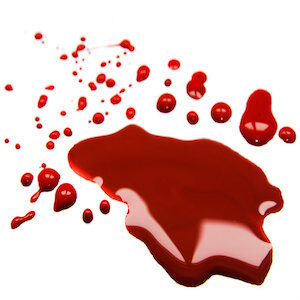By Dr. Ken Broda Bahm:

After receiving many warnings from the court and counsel on what they’re about to see, the jurors are finally shown the injury photos. Some of them frown, one covers her face, many look away after a quick glance, and a couple study it closely. This is a regular occurrence in cases involving violence or personal injuries. The photos will often come in, any bias notwithstanding, because there is an arguable probative value, especially in a civil case focusing on injury and on pain and suffering. It is clear to anyone that these dramatic and graphic injury photos have an impact on the jurors, but how does it influence their decision?
This is an under-researched question, but one recent study gives additional reasons to think that this kind of high-impact evidence serves to heighten conclusions not just about the injury itself, but about the plaintiff’s case as a whole. Jessica Salerno and Hannah Phalen (2020) of Arizona State University conducted an experiment in which mock jurors were presented with identical evidence and persuasive appeals. During the experiment, one group viewed a graphic photograph (a severed leg as a result of a driver hitting a guard rail), the other group just heard a verbal description. Viewing the photo, they found, led to emotional reaction of disgust, and that motivated a biased assessment of other evidence, including evidence unrelated to the injury. They concluded, “Mock jurors who saw the gruesome image (versus those who merely read about it) reported feeling more disgust, which in turn led them to (a) agree more with other plaintiff evidence that was unrelated to the injury, and (b) agree less with other defense evidence that was unrelated to the injury.” In this post, I’ll bottom line the research, the caveats, and the implications.
Research: High Impact Evidence Can Have a Halo Effect
Jurors’ reaction to a gruesome photo would be relevant if the reaction stuck to the point being demonstrated in the photo. But it doesn’t. Instead, the reaction drifts to other issues. The reason is that the emotions elicited by a graphic image prompts a heightened psychological state which in turn influences the way jurors will see other evidence that is unrelated to the photo. In deciding whether the image is allowed as evidence, judges have to decide whether the probative value outweighs the prejudicial effect. This can be difficult in practice, since even when the unique probative value is quite minor (i.e., in the case tested, jurors can certainly understand that the driver’s leg was severed without seeing it) the prejudicial effect is often a matter of speculation. Defendants seeking to keep this information out of evidence might think about attaching this study as an exhibit in their motion.
Caveat: The Frustration of ‘It Depends’
In the article, the authors do note that the limited prior research has not been fully consistent: In some tests, the gruesome photos have increased liability verdicts, and in other cases it did not. In the recent study, the injury photographs caused research participants to show more agreement with plaintiff evidence, and more disagreement with defense evidence, but it did not have a strong effect on the level of damages. There is, of course, variation in any research: If you run the same study multiple times, you will get different results based on the sample. But in this case, it is likely that a lot of variation is coming from the stimulus itself. A “gruesome injury photo” isn’t just one thing. Depending on the content, the subjects, and how it fits into the story, there could be a variety of reactions. Some photos may even motivate protective feelings — e.g., “That’s so bad, I want to believe it would never happen to me, so I want to search for reasons why it is the plaintiff’s own fault.” If you have high impact photo evidence in your case, there are good reasons to test it specifically through a survey or a mock trial.
Extension: It Likely Isn’t Just Gruesome Photos
Based on what we know generally in social science, this halo effect probably isn’t unique to gruesome photos. Any evidence that is high impact could generalize to other unrelated issues. The law might train you to adapt rational blinders on where evidence is and isn’t relevant, but don’t trust that when it comes to human behavior. In the case tested, for example, it might be tempting to believe that gruesome evidence won’t uniquely impact the case because, after all, they already know the leg was lost. But that isn’t the way psychological arousal works: Once it spills, it spreads. For that reason, think about the effect of any evidence that is likely to prompt strong emotions.

Thanks for reading. I am a litigation consultant (bio here) specializing in mock trial research, witness preparation, jury selection, and case strategy, generally (but not always) in high-value civil cases. If you have a comment, a request for a future topic, or a concern about a current area of litigation, or a question about your own case, contact me now.
Other Posts on Graphics in Trial:
- Follow the Ten Commandments of Graphics Use in Trial
- Use Cartoon-style Graphics to Persuade
- Visualize Damages
Salerno, J. M., & Phalen, H. J. (2020). The Impact Of Gruesome Photographs On Mock Jurors’ Emotional Responses And Decision Making In A Civil Case. DePaul Law Review, 69(2), 14.